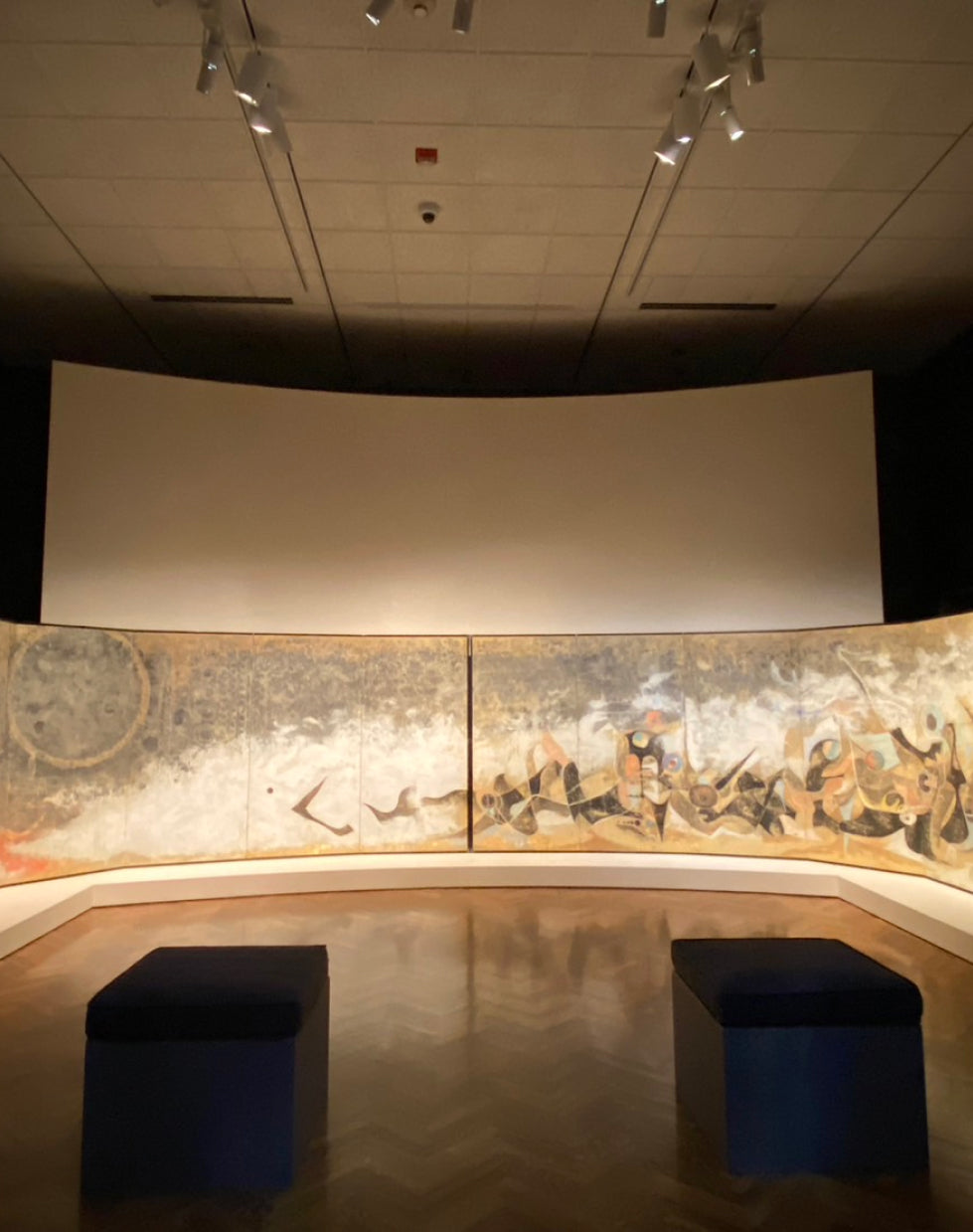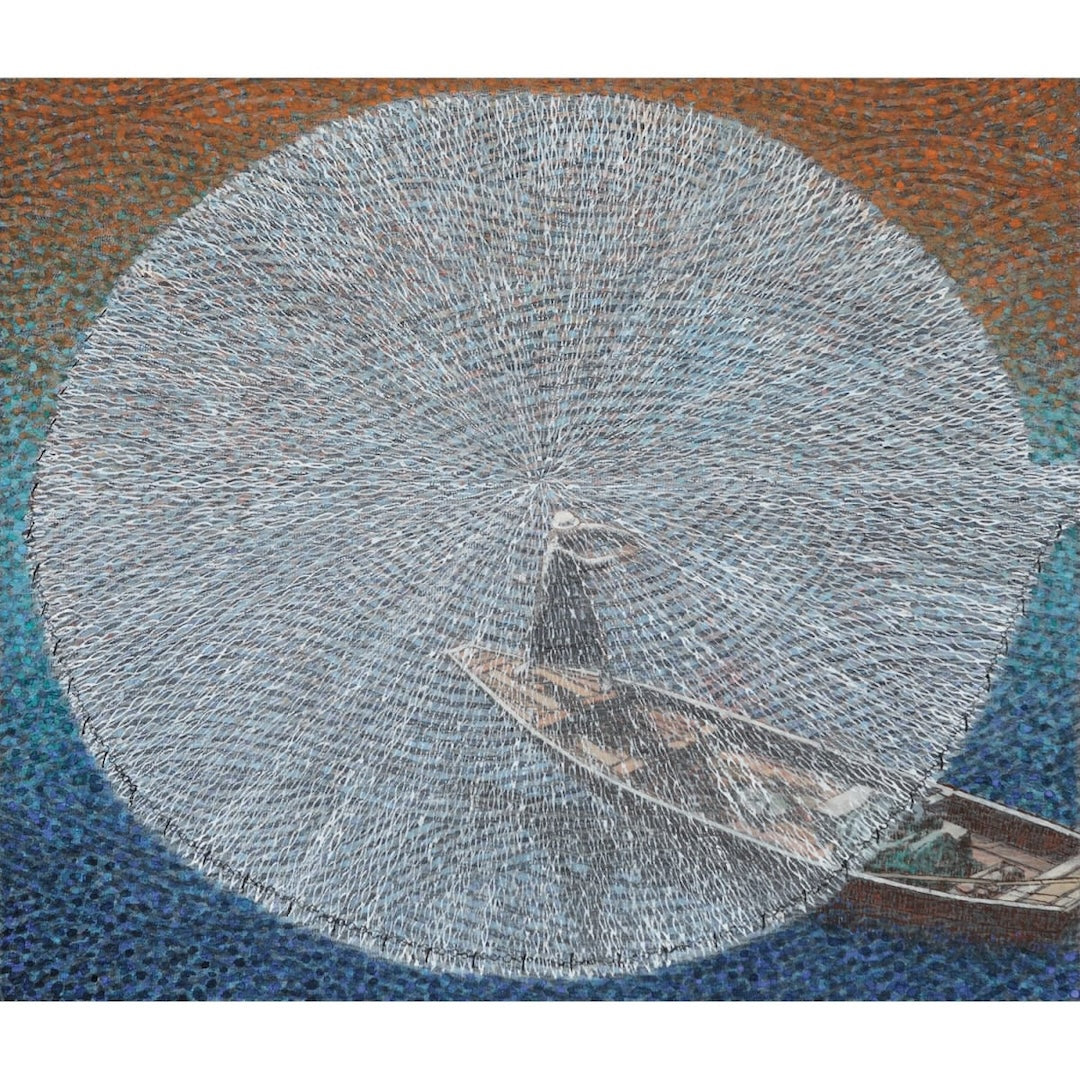
Masaaki Miyasako
Masaaki Miyasako -Same Drawing from Different Times-
November 26th - December 18th, 2021
Exhibition
Exhibition view
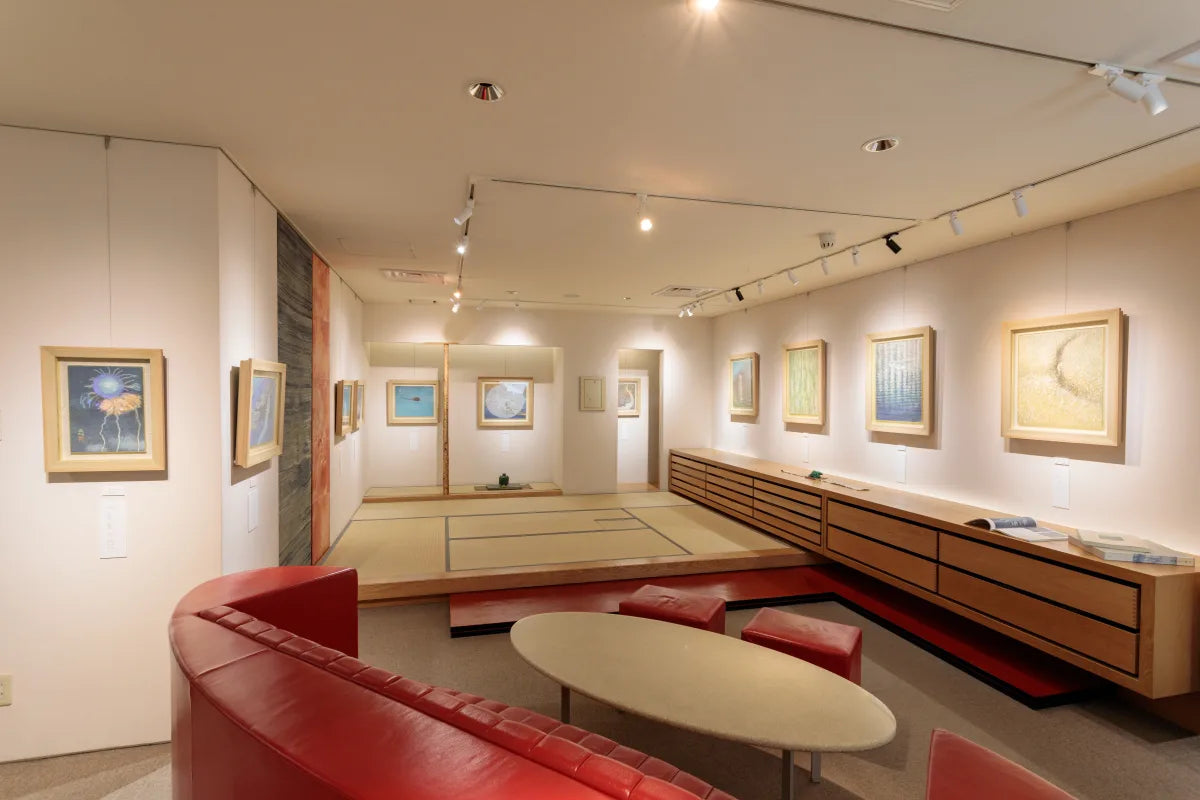
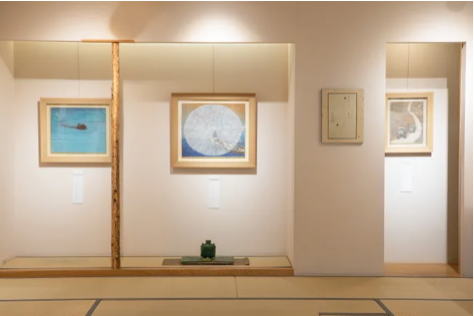

I am pleased to be able to hold my first solo exhibition in a long while at Ippodo.
In this solo exhibition, "Different Times, Same Figures," I have expressed a worldview in which opposing elements across dimensions are intricately intertwined.
Until the Edo period, Western culture mixed with Central Asian culture as it traveled along the Silk Road, and in the process it repeatedly imitated, accepted, and transformed. However, in the Edo period, society began to withdraw into isolation, regardless of the will of the whole society. During this time, the frustrations that had been stuffed into the narrow barrel that was Japan began to ferment and bubble, and eventually people began to find value in things that were completely different from the original.
This was the rise of Japanese culture known as Japonism.
Such seeds already existed during the Heian period, which is considered the heyday of Japanese culture.
It's an attempt to move dimensions within a painting.
For example, in the facial depictions of Buddha on the murals in the Golden Hall of Horyuji Temple, the eyes and crown face forward, while the nose and facial contours face more to the side, creating a mixture of frontal and lateral aspects in a single face.
At this point, the world of Cubism, which brought three-dimensional objects into a two-dimensional world, had already been realized.
Additionally, the Shigisan Engi Emaki scroll depicts a scene in which rice sacks fly down, and in the pilgrimage scene, the passage of time as things move.
The four-dimensional world was expressed using the method of simultaneous projection at different times.
In this solo exhibition, "Different Times, the Same Figures," I have achieved the transcendence of expression from "reclusion" to "liberation," from "I have to do it this way" to "I want to do it this way." In addition, with a phantom lantern using cutting-edge digital technology, you can feel the branches of weeping cherry trees swaying and the ripples on the surface of the river.
We hope you enjoy this attempt at transporting dimensions within a Japanese painting, where opposing elements across dimensions sometimes become intricately intertwined, and sometimes freely transcend time and space.
We would like to express our sincere gratitude to Ms. Aono Keiko of Ippodo, who supported this endeavor and provided the venue, as well as to NTT and researcher Yamauchi Shota, who helped with the production of the lanterns.
Professor Emeritus, Tokyo University of the Arts
Masaaki Miyamaki
Towards the Masaaki Miyasako Exhibition
In March of this year, Masaaki Miyasako appeared at Ippodo for the exhibition of wood carvings by Tsuyoshi Kishino. I was attracted by his cheerful and fun personality and his energy, so I visited his laboratory at Tokyo University of the Arts right afterwards.
A brand new building in a corner of the Tokyo University of the Arts is the Super Clone Cultural Property Laboratory, a laboratory that brings together cutting-edge scientific and technological equipment, various tools, and talented people, where the Asuka period murals from the Golden Hall of Horyuji Temple and the Shaka Trinity have been reproduced.
Not only Japanese cultural assets but also cultural assets from around the world were reproduced as clone art, which made me proud to be Japanese.
Next, I was shown the paintings of Masaaki Miyasako. The quiet paintings were profoundly beautiful, and touched my heart, like the blood pumping through my body. So I asked him to hold a solo exhibition at Ippodo.
His masterpiece, "Water Fireworks," depicts with stunning detail the exact moment a net is thrown onto the water's surface.
In addition, "Concerto" and "Weeping Cherry Blossom" use digital technology to make the river surface appear to sway.
The theme of this exhibition is "Different Times, Same Images," incorporating time into still images.
His Japanese paintings are painted on the reverse side, a technique used in Buddhist paintings from the Heian and Kamakura periods, and by Ito Jakuchu of the Edo period, and the finished product is finished with a thin layer of silk pasted on the surface.
The unevenness of the surface of the thin silk creates shadows, and the colors overlap, inviting you to go deeper into the painting. He collects Japanese paper, mineral pigments, and thin silk with great care.
In his art book he wrote, "I have lived my life mainly on dreams. I have lived in dreams. I have lived with dreams."
Their intense passion and hard work bring their dreams to fruition, creating beautiful paintings that they leave behind for the world.
In that painting, I feel like I too can live with my dreams.
Keiko Aono, Ippodo
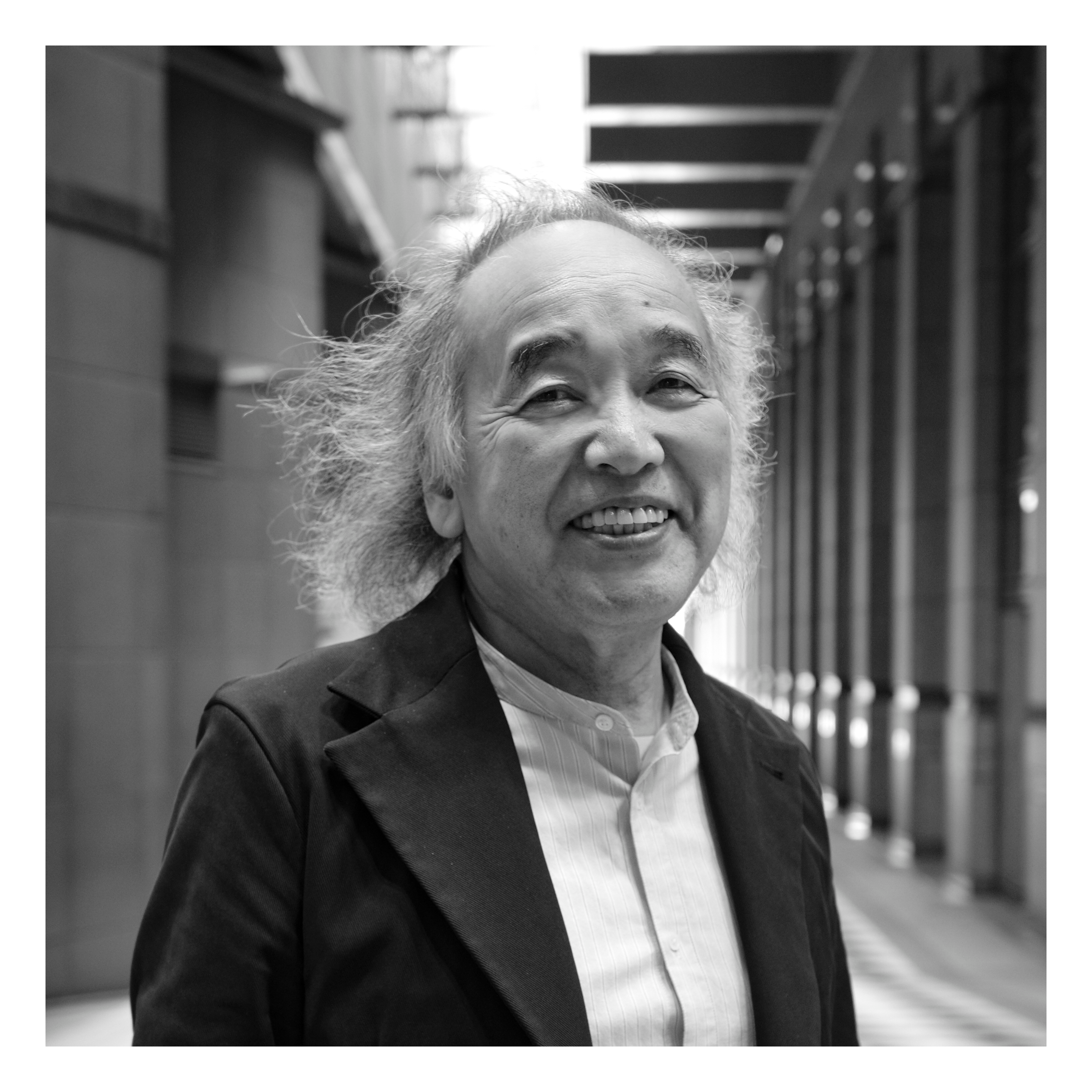
Masaaki Miyasako
Masaaki Miyasako
Biography
Born in Matsue, Shimane Prefecture in 1951
1981 Completed Japanese Painting, Conservation and Restoration Technology, Graduate School of Fine Arts, Tokyo University of the Arts
1988: Tokyo Central Museum of Art Japanese Painting Grand Prize Exhibition "Nice to Me" Award for Excellence
1991: Received the Encouragement Award and the Minister of Foreign Affairs Award for "Fuuga" at the 46th Spring Inten Exhibition, and the Encouragement Award for "Fuuga" at the 76th revived Inten Exhibition
In 1993, he won the 12th Japan Art Academy Scholarship Maeda Seison Prize, and in 1994, he won the Japan Art Academy Prize (Daikan Award) at the 78th Inten Exhibition for "Tenshada."
1999: 84th Inten Exhibition "Well-Tempered Clavier" won the Minister of Education Award
2000 Professor, Department of Cultural Properties Conservation and Japanese Painting, Graduate School of Fine Arts, Tokyo University of the Arts
2017 Retired from Tokyo University of the Arts Solo exhibition "Masaaki Miyasako - Reading Between the Lines" (Tokyo University of the Arts Museum)
2021 "Masaaki Miyasa Exhibition - Different Times and Same Pictures -" Ginza Ippodo (hereinafter ')
2023 Solo exhibition “Confusion” (Ippodo New York), etc.
Collection
National Museum of Modern Art, Tokyo, National Museum of Western Art, Tokyo, Japanese diplomatic missions overseas, Tokyo University of the Arts, Shimane Museum of Art, Adachi Museum of Art, Yamatane Museum of Art, Menard Art Museum, Toyota Automobile Museum, Ueda City Museum of Art, Koganji Temple, Kinpusenji Temple, Turkey-Japan Cultural Exchange Center, Benz Museum Stuttgart, National Museum of Russian Art, Lisbon Museum of Asian Art, Pitti Museum of Modern Art, Italy, and many more


